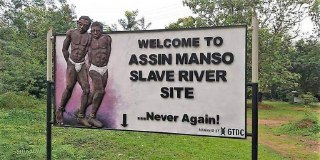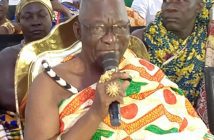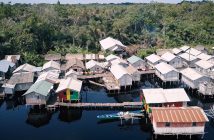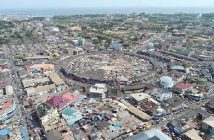Many historical sites in Ghana show the great struggle the people of Gold Coast, now Ghana, endured before becoming an independent country. Even so, Ghana is still tied to the “whites” for survival. Just as George Bernard Shaw said, “Independence? That is middle class blasphemy. We are all dependent on one another, every soul of us on earth.”
The Trans-Atlantic trade which led to the establishment of these historical sites began from 16th to the 19th century involving the transportation of enslaved Africans by slave traders mainly to America. Majority of the enslaved people were from Central and West Africa who were sold by other West Africans or half European Merchant Princes.
History of slave trade records that, the Caribbean and Atlantic economies required the labour for sugarcane production and other commodities which led to the trade of slaves. Especially in the late 17th and 18th century, when these Western European states were vying with each other to create overseas empires.
The Americans on the other hand needed labour force for their coffee, tobacco, cocoa, sugar and cotton plantations, gold and silver mines, rice fields, the construction industry, cutting timber for ships as well as domestic service.
The first ever Africans taken against their will were termed as, ‘indentured servants ‘, with similarities as a standing legal contract based workers coming from Britain and Ireland.
Sadly, in the 17th century, this transitioned to being treated as a racial caste, with African slaves and their future offspring being legally the property of their ‘masters’, termed as Partus sequitur ventrum. As devastating as it sounds, the slaves were considered as part of goods and services in the market and were treated as such.
The Assin Manso Slave River Park, among many transitional slave sites in Ghana, was one of the largest slave markets for gathering people to sell into slavery during the infamous trans-Atlantic slave trade.
The Assin Manso Ancestral Slave River Park, was the centre where slaves rested, bathed, were sorted out and resold, before they were transported through the Cape Coast and Elmina Castles to waiting ships bound for the Americans.
It was the final link in the slavery route from northern Ghana and was known to have been the largest slave market for the merchant supplying slaves on the forts and castles on the coast.
Over the years the slave river site has been developed to help Africans all over the world to visit their roots and learn about their ancestral struggles.
There are three sections of the park with each section carrying a unique background story. They are, the Ancestral graveyard, the memorial wall of return and the last bath.
Ancestral Graveyard
This Graveyard holds the tombs of two brave African slaves, Samuel Carson and Crystal whose skeletal remains were returned from the United States of America and Jamaica respectively in 1998 for re- internment in Ghana.
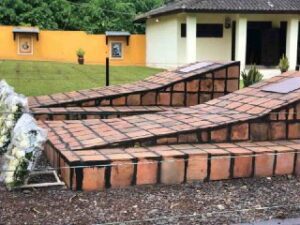
The Memorial Wall of Return
This is where most Africans write their names on the wall indicating they have found their root, when they visit the park. There was an epitaph which pays tribute to some prominent people who were involved in slavery. An unfortunate fact is, captured Africans were forced to trek barefoot, through the harsh bush and over rough terrain for sometimes hundreds of miles headed to the Gold Coast Dungeon. They suffered abuse, were starved and beaten into compliance by the hired drivers of the slave merchant. They were often attacked by wild animals, but unable to fight or run because they remained shackled and chained.M any lives and spirits were lost along this hazardous journey.
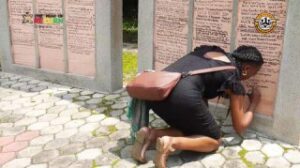
The Last Bath
On the way to the coastal dungeon, the slave merchants stopped at the DONKOR NSUO, ”the slave river”, in Assin Manso. Captured Africans were allowed to regain lost energy there after their long journey. Here, they were well fed and rested for several days or weeks. The merchants knew they could guarantee higher prices if they appeared healthy and strong.
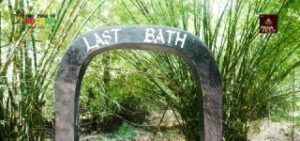
DONKO NSUO is where the captives would take their last bath in waters of their native land. The Portuguese began the inhumane practice of branding. They would use a red, hot branding iron to burn an identifying mark onto the skin of captives. The burns mark would leave a scar on the shoulder, the breast or the upper arm to show ownership. Other times branding was used to show that proper duty had been paid. When it was time to leave, they were sorted, leaving the weak ones behind chained trees, where the unthinkable happened. The stronger captives continued walking for approximately 40 miles to Cape Coast Castle, still shacked and chained.
Nelson Mandela once said, “when a man has done what he considers to be his duty to his people and his country, he can rest in peace.” Our ancestors have paid their dues through slavery and others fighting for our independence, now we have the freedom to continue from where they left off. And not go back to being chained.
REFERENCES
1. Retrieved from, https://visitghana.com/attractions/assin-manso-ancestral-slave-river-site/
2. 1. Olorunmaiye C.(2019), Tourists site in Cape Coast, Central Region, Ghana.
Retrieved from, https://food.jumia.com.gh/blog/tourist-sites-cape-coast-central-region-ghana-1428, Retrieved in (June,2020).


